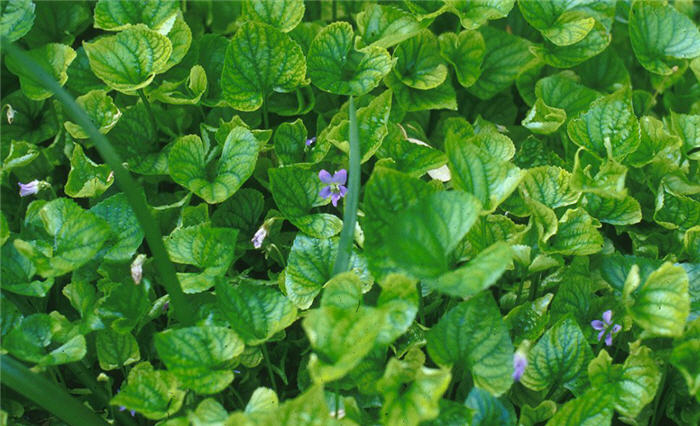| Botanical Name: Viola odorata | |
| Common Name: Sweet Violet, English Violet |

-
Anatomy
-
Culture
-
Design
Plant Type
Ground cover, Perennial
Height Range
Under 1'
Flower Color
Violet, White
Flower Season
Spring
Leaf Color
Green
Bark Color
n/a
Fruit Color
n/a
Fruit Season
n/a
Sun
Half, Shade
Water
Medium
Growth Rate
Fast, Moderate
Soil Type
Clay, Loam
Soil Condition
Average, Rich, Well-drained
Soil pH
Neutral
Adverse Factors
Invasive
Design Styles
English Cottage, Formal, Japanese, Meadow, Woodland
Accenting Features
Fragrance, Showy Flowers, Unusual Foliage
Seasonal Interest
Spring
Location Uses
Entry, Perennial Border, Shrub Border, Foundation, Lawn, Parking Strip, Patio, Walkways
Special Uses
Cut Flowers, Filler, Mass Planting, Lawn Alternative, Naturalizing, Small Spaces
Attracts Wildlife
n/a
Information by: Stephanie Duer
Photographer: Sandra Chipley
Photographer: Sandra Chipley
-
Description
-
Notes
Sweet violets are charming additions to the shade garden. heart-shaped leaves are a deep, glossy green. Violet spring flowers are small, nodding, and fragrant. Spreads by seeds; some think it invasive, but I enjoy seeing its perky self at the shady fringes of the lawn. My dog Mieke loved to lay on them, and they tolerated her quite well. Grows 2 to 3 inches tall and 12 or more inches wide.
Grow in part to full shade in any well-drained soil. If you don't want it re-seeding itself, water it a little less and mow it to remove the flowers. It may escape its location, and set up little colonies in your lawn, and given that we could all lighten up a bit about perfect lawns, a charming lesson in letting go.